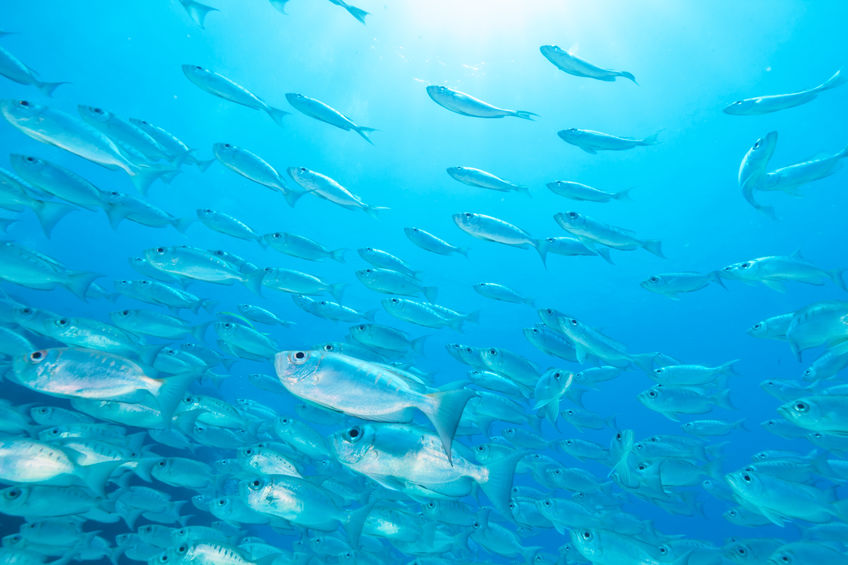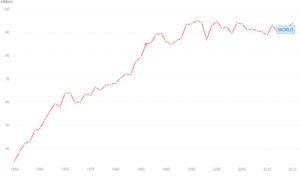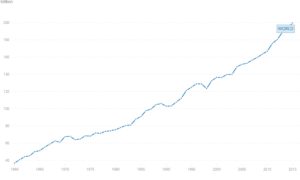Climate change is causing fish to “swim for their lives”, to flee warming water temperatures, according to a November 29th article in the New York Times (https://www.nytimes.com/2019/11/29/climate/climate-change-ocean-fish-iceland.html). According to the Times, fish that are unable to flee toward the poles are having a hard time breathing because warm water holds less oxygen than cold water. Objective facts, however, show fish are doing quite well in recent years and decades as the Earth modestly warms.
“In the tropics, this issue [warming water temperatures] is especially acute because, as fish head toward the poles, they aren’t replaced, creating a food vacuum,” claims the Times. “In some tropical countries, which emit a tiny fraction of greenhouse gases compared with countries farther north, fish provide as much as 70 percent of people’s nutrition according to the Food and Agriculture Organization.”
The World Bank keeps detailed historical records on global fish production. According to the World Bank graph, below, on tons of fish captured each year, the global wild fish catch tripled between 1960 and 1995 and has held steady at such elevated levels since then (https://data.worldbank.org/indicator/ER.FSH.CAPT.MT).
Meanwhile, according to the World Bank graph, below, global fisheries production in managed systems has tripled since 1995 (https://data.worldbank.org/indicator/ER.FSH.AQUA.MT).
Taken together, global fish production continues to set new records virtually every year.
Of course, higher fish catch and production numbers in a given year should put more strains on the ability of fish to continue to reproduce and grow their numbers. Nevertheless, new records continue to be set on a near-annual basis.
If global warming is making it hard for fish to breathe, live, and sustain the fishing industry – as the New York Times asserts – that certainly isn’t showing up in global fish production numbers.


